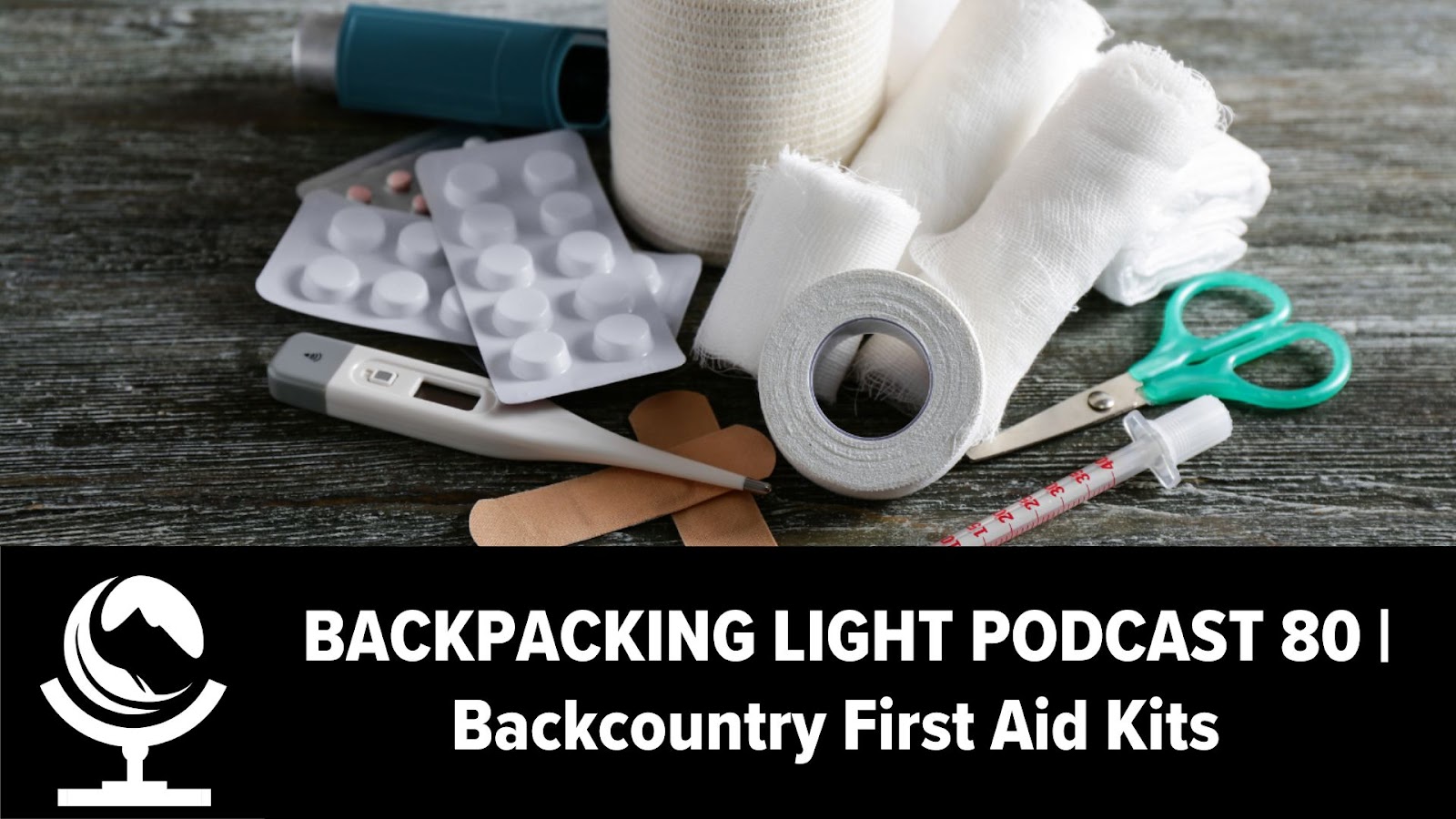Episode 80 | Backcountry First Aid Kits
Listen
Summary
In this episode of the Backpacking Light Podcast, Ryan discusses ultralight first aid kits for backcountry use.

In this Episode:
- What types of injuries should I be able treat within my ultralight backcountry first aid kit?
- Minimizing risk for common injuries: wounds, minor falls, sprains, strains, overuse injuries, hygiene and water-bourne illnesses.
- Focusing first aid kits on the highest probability injuries.
- What is in my first aid kit?
- Injuries that are not treatable in the field.
- Satellite communications and self- or assisted evacuations
Learn More:
- Rex Sanders shares his viewpoint on the philosophy of backpacking first aid.
- Emylene VanderVelden interviews a Canadian Moutain Rescue Medic as they share their viewpoints on lightweight first aid and trauma kits.
About the Backpacking Light Podcast
Subscribe
- Apple Podcasts | Spotify | Google Play | Stitcher | RSS
More Episodes
Feedback, Questions, Tips?
- Submit them via email or Twitter and get featured on our next podcast!
Credits
- Backpacking Light - Executive Producer
- Ryan Jordan - Director and Host
- Chase Jordan - Producer
- Look for Me in the Mountains - Music
- Written by: Chris Cunningham and Ryan Jordan
- Performed by: Chris Cunningham (acoustic guitar, lead and harmony vocals, harmonica), Chad Langford (upright bass), and Tom Murphy (mandolin).
- Produced by: Basecamp Studios in Bozeman, Montana
Sponsors
- This episode of the Backpacking Light Podcast is supported and kept advertising-free by Backpacking Light membership fees. Please consider becoming a member which helps support projects like this podcast, in addition to a whole slew of other benefits!
Contact
You can contact us at [email protected], or follow us on social media -
- Backpacking Light - Facebook | Instagram | Twitter
- Ryan Jordan - Instagram | Twitter | WWW
- Chase Jordan - WWW
Disclosure
(Updated April 9, 2024)
- Product mentions: Backpacking Light does not accept compensation or donated/discounted products in exchange for product mentions or placements in editorial coverage, including podcast episode content not excplicitly identified as sponsored content.
- Some (but not all) of the links in these show notes may be affiliate links. If you click on one of these links and visit one of our affiliate partners (usually a retailer site), and subsequently place an order with that retailer, we receive a commission on your entire order, which varies between 3% and 15% of the purchase price. Affiliate commissions represent less than 15% of Backpacking Light's gross revenue. More than 70% of our revenue comes from Membership Fees. So if you'd really like to support our work, don't buy gear you don't need - support our consumer advocacy work and become a Member instead.
- Learn more about affiliate commissions, influencer marketing, and our consumer advocacy work by reading our article Stop wasting money on gear.



Home › Forums › Podcast 80 | Backcountry First Aid Kits